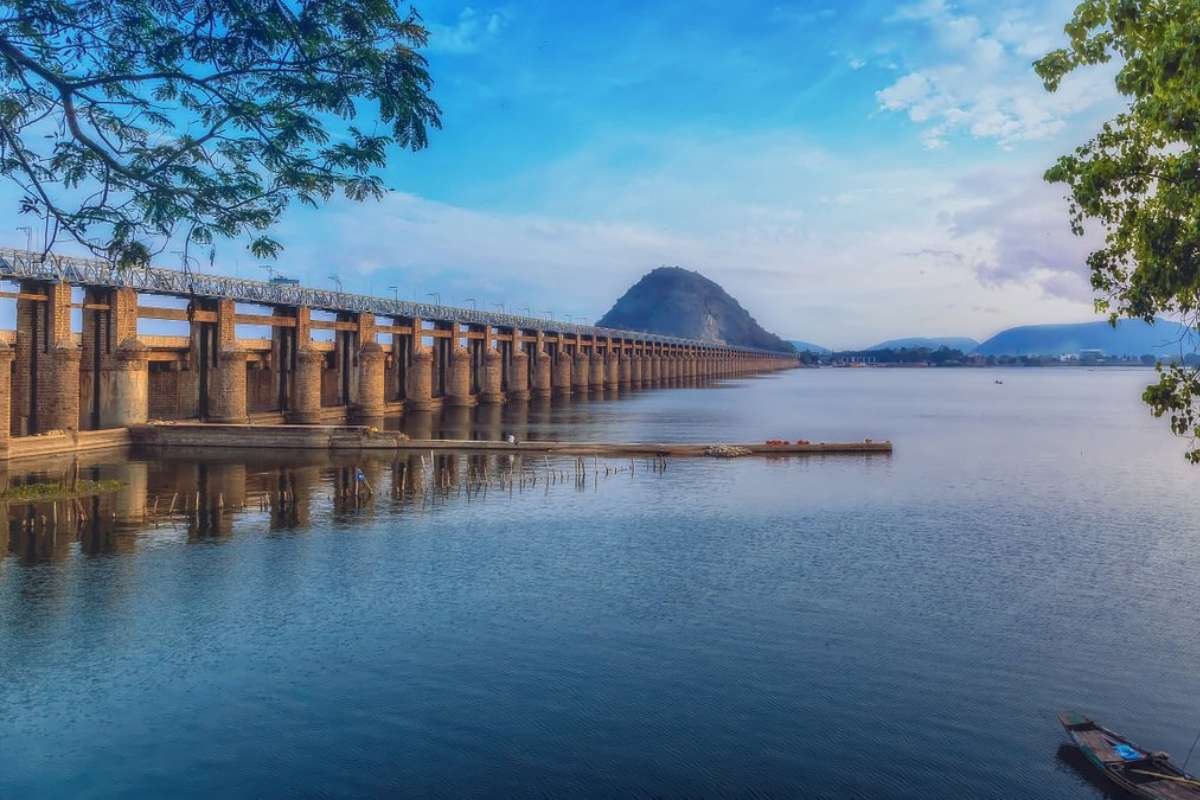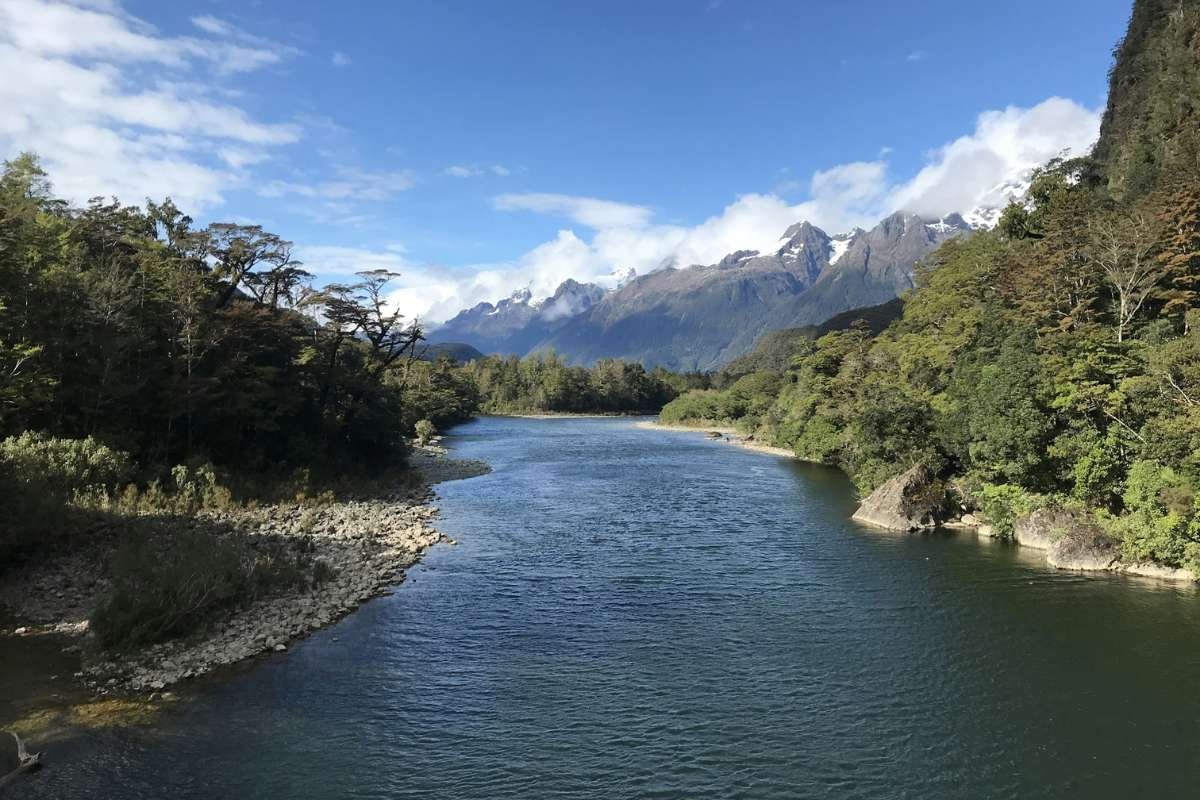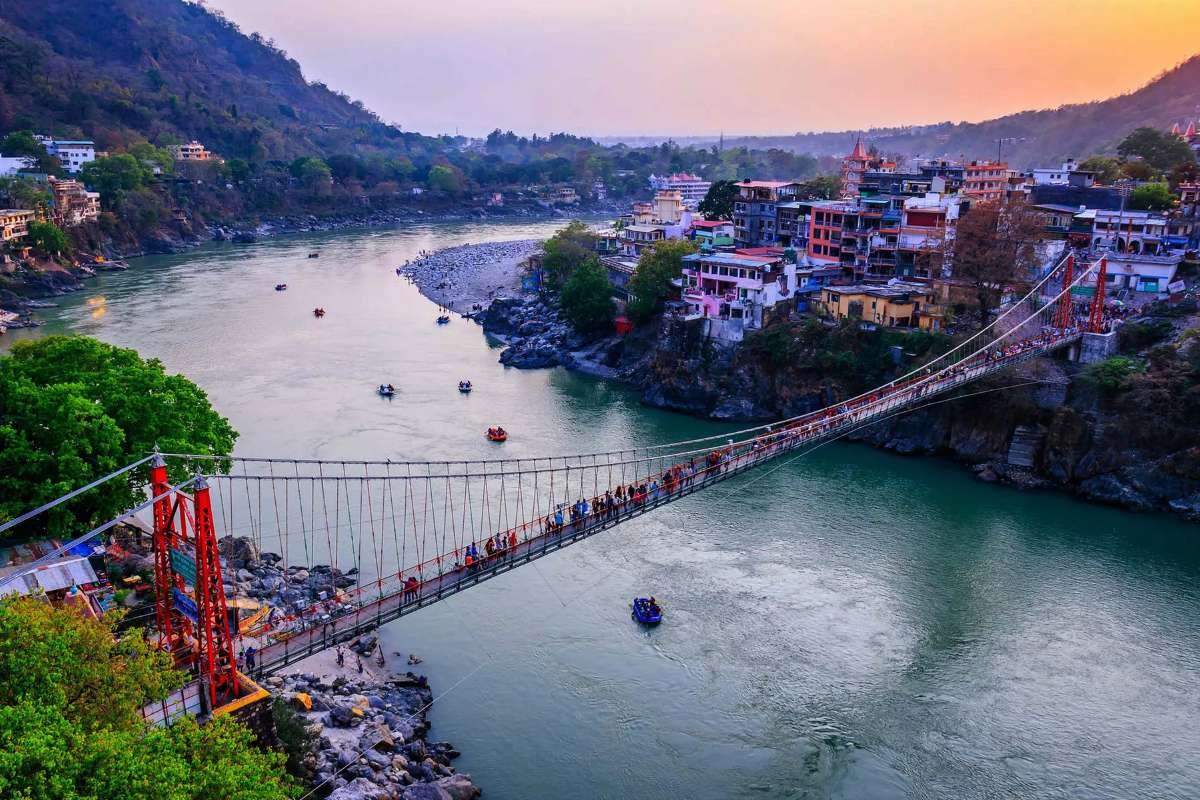India is a country where rivers are not only water bodies, but they are lifelines. They flow through mountains, valleys, cities, and farms, helping shape the land and support life. These rivers have been a part of our culture and traditions for many years. From the snowy Himalayas in the north to the green plains in the south, rivers are found in almost every part of the country. They play an important role in farming, daily life, and even in religious beliefs.
Among all the rivers, the longest ones are special; they connect different regions, people, and history. These rivers have seen kingdoms grow, helped people build their lives, and still support India’s progress today.
In this article, we will learn more about the longest rivers in India, where they start, the places they pass through, the stories they tell, and why they are so important to India.
Here Are the Top 7 Longest Rivers in India You Should Know
1. The Ganga – The Lifeline of India
Length- 2,525 km
Origin- Gangotri Glacier, Uttarakhand
Terminus- Bay of Bengal
The Ganga, or Ganges, is undoubtedly the most iconic and sacred of the longest rivers in India. Revered in Hindu mythology and deeply woven into Indian culture, it originates from the Gangotri Glacier in the Himalayas and meanders through several northern Indian states, including Uttarakhand, Uttar Pradesh, Bihar, and West Bengal.
Despite concerns over pollution, the Ganga remains central to the lives of millions. It supports vast agricultural lands, provides drinking water, and is integral to religious rituals. Major cities such as Haridwar, Varanasi, and Patna lie on its banks, making it not only geographically important but also culturally irreplaceable.
2. The Godavari – The Dakshina Ganga
Length- 1,465 km
Origin- Trimbakeshwar, Maharashtra
Terminus- Bay of Bengal
The Godavari is the second-longest river in India and the longest in peninsular India. Often referred to as the ‘Dakshina Ganga’ or the ‘Ganges of the South,’ the Godavari originates in Maharashtra and flows eastward across Telangana, Andhra Pradesh, and parts of Chhattisgarh and Odisha before emptying into the Bay of Bengal.
This river is of immense agricultural importance, especially for the Deccan Plateau. Its vast basin irrigates large tracts of farmland, and its waters are harnessed for hydroelectric power and drinking supply. The Godavari also plays a significant role in religious pilgrimages, with the famous Kumbh Mela held in Nashik.
3. The Krishna River – South India’s Artery
Length- 1,400 km
Origin-Mahabaleshwar, Maharashtra
Terminus- Bay of Bengal

Another crucial name in the list of the longest rivers in India is the Krishna River. It flows through the states of Maharashtra, Karnataka, Telangana, and Andhra Pradesh. Known for its swift current and wide basin, the Krishna River is essential for agriculture and irrigation across South India.
The river’s major tributaries, Bhima, Tungabhadra, and Koyna, further enhance its reach and utility. Numerous dams and irrigation projects like the Nagarjuna Sagar and Srisailam dams make it one of the most harnessed rivers in the southern part of the country.
Don’t Miss: From Majestic Mountains to Serene Beaches: The Most Beautiful Places in India
4. The Yamuna – The Ganga’s Sacred Tributary
Length- 1,376 km
Origin- Yamunotri Glacier, Uttarakhand
Terminus- Confluence with the Ganga at Prayagraj
While technically a tributary of the Ganga, the Yamuna is one of the longest rivers in India in its own right. It begins in the Yamunotri Glacier and runs parallel to the Ganga for much of its course, eventually joining it at the holy site of Prayagraj (Allahabad).
The Yamuna flows through important cities like Delhi, Agra, and Mathura. Despite being one of the most polluted rivers today, it continues to hold immense religious, cultural, and ecological significance.
5. The Narmada – The Lifeline of Madhya Pradesh
Length- 1,312 km
Origin- Amarkantak Plateau, Madhya Pradesh
Terminus-Arabian Sea
The Narmada is unique among the longest rivers in India for flowing westward, against the general eastward trend of Indian rivers. Originating from the Amarkantak Plateau, it traverses Madhya Pradesh and Gujarat, finally emptying into the Arabian Sea.
Narmada is one of the few Indian rivers considered holy from source to mouth. It is famous for the Marble Rocks at Bhedaghat, and the Narmada Parikrama – a religious pilgrimage undertaken along its banks. Additionally, it plays a vital role in irrigation and power generation through projects like the Sardar Sarovar Dam.
6. The Brahmaputra – The Mighty Transboundary River
Length in India- 916 km (Total Length: 2,900 km)
Origin- Angsi Glacier, Tibet (as Yarlung Tsangpo)
Terminus- Bay of Bengal
Though only a part of the Brahmaputra flows through India, it is still one of the longest rivers in India when considering its total length. Known for its vast width and strong currents, the Brahmaputra originates in Tibet, enters India through Arunachal Pradesh, and flows through Assam before merging with the Ganga in Bangladesh.
The river is prone to flooding during the monsoon, but its alluvial plains are among the most fertile in the region. It is crucial for agriculture, inland water transport, and hydroelectric power. Moreover, it is deeply entwined with the culture and economy of Northeast India.
7. The Mahanadi – Odisha’s Major Waterway
Length- 851 km
Origin- Sihawa, Chhattisgarh
Terminus- Bay of Bengal

Though shorter than others on this list, the Mahanadi still qualifies as one of the longest rivers in India, especially considering its regional impact. Originating in Chhattisgarh, it flows eastward into Odisha, playing a vital role in the agricultural economy of both states.
The river forms a fertile delta and is dammed at several points, including the famous Hirakud Dam – one of the longest earthen dams in the world. It is a crucial source of irrigation, power, and livelihood for millions.
Cultural and Economic Significance of Indian Rivers
India’s river systems are more than just natural waterways. They are the arteries of civilization that have supported life for centuries. Settlements, empires, and cultures have all flourished along these rivers. The longest rivers in India support agriculture, supply drinking water, generate hydroelectricity, and serve as major transportation routes.
Moreover, these rivers hold religious significance. Countless rituals, festivals, and pilgrimages revolve around rivers like the Ganga, Yamuna, and Godavari. They are seen as living deities, with people worshipping them for their life-giving properties.
Environmental Challenges and the Way Forward
Despite their importance, many of the longest rivers in India face severe ecological threats. Pollution from industrial waste, untreated sewage, deforestation in catchment areas, sand mining, and encroachment are deteriorating the health of these rivers.
Government initiatives like the Namami Gange program and various river-linking projects aim to restore and optimize the utility of these rivers. However, public participation, sustainable practices, and technological interventions are essential to ensure that India’s rivers continue to thrive.
Conclusion
From the mighty Ganga to the sacred Godavari, the longest rivers in India are not only geographical features; they are lifelines, shaping the nation’s past, present, and future. These rivers nourish the soil, fuel the economy, and inspire cultural unity across the country. As custodians of this natural heritage, it is our collective responsibility to preserve, protect, and respect these magnificent waterways for generations to come.








